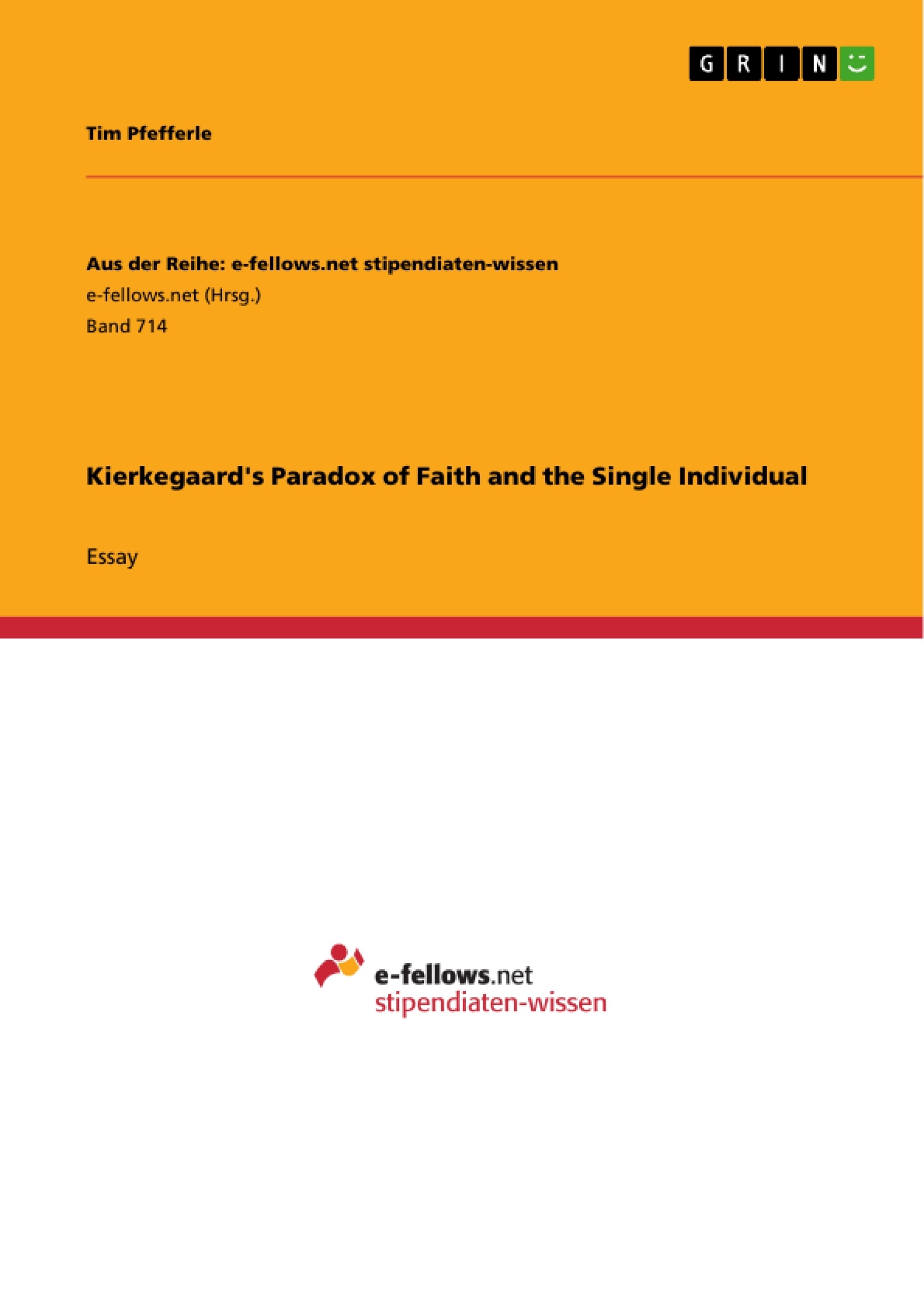In Fear and Trembling, Søren Kierkegaard’s pseudonymous author Johannes de Silentio deals with the question about the nature of true faith. De Silentio indicates that true faith can only be arrived at through the individual and his engagement with the paradox of faith. Thus, only the single individual, as termed by de Silentio, is capable to stand in a true relationship to God.
In the following, I will aim to explain the concept of the single individual as well as what de Silentio means by the paradox of faith. I will relate this to the story of as it figures in de Silentio’s account of the paradox and the distinction between the tragic hero and the knight of faith. In this discussion, the concepts of interiority and exteriority, subjectivity, and mediation will be associated with the broader explanation.
Introduction
In Fear and Trembling, Søren Kierkegaard’s pseudonymous author Johannes de Silentio deals with the question about the nature of true faith. De Silentio indicates that true faith can only be arrived at through the individual and his engagement with the paradox of faith. Thus, only the single individual, as termed by de Silentio, is capable to stand in a true relationship to God.
In the following, I will aim to explain the concept of the single individual as well as what de Silentio means by the paradox of faith. I will relate this to the story of as it figures in de Silentio’s account of the paradox and the distinction between the tragic hero and the knight of faith. In this discussion, the concepts of interiority and exteriority, subjectivity, and mediation will be associated with the broader explanation.
The Single Individual and the Paradox
Frequently asked questions
What is the central theme of Søren Kierkegaard's *Fear and Trembling*?
The text explores the nature of true faith, arguing that it's achieved through an individual's engagement with the paradox of faith and their relationship with God.
What does Johannes de Silentio mean by the "single individual"?
The "single individual" is someone capable of establishing a true relationship with God, distinct from the collective or societal norms.
What is the "paradox of faith" as described by de Silentio?
The paradox of faith is explored using the story of Abraham and Isaac, where faith requires actions that seem to contradict ethical or rational principles. The text discusses how this paradox relates to a higher duty to God.
How does the story of Abraham and Isaac relate to the concepts discussed?
The story of Abraham and Isaac serves as a central analogy used by de Silentio to illustrate the paradox of faith and the nature of the single individual's absolute duty to God.
What is Problema II about, as mentioned in the text?
Problema II addresses the question of whether there is an absolute duty to God and answers in the affirmative. This duty is characterized by paradox and the concept of the single individual.
What concepts are associated with the explanation of the single individual and the paradox of faith?
Concepts such as interiority, exteriority, subjectivity, and mediation are associated with the broader explanation of the single individual and the paradox of faith within the text.
- Quote paper
- Tim Pfefferle (Author), 2013, Kierkegaard's Paradox of Faith and the Single Individual, Munich, GRIN Verlag, https://www.grin.com/document/214295




